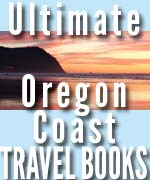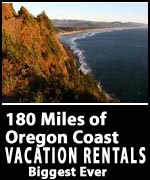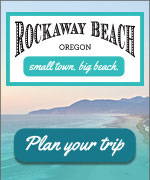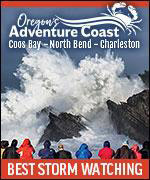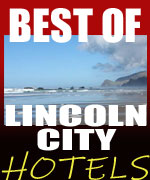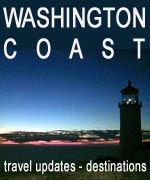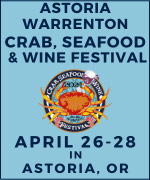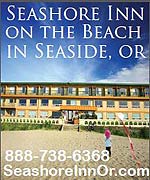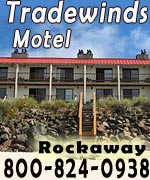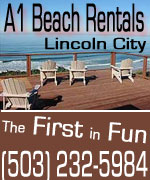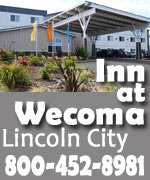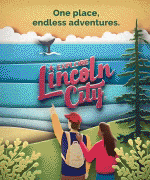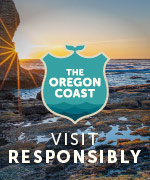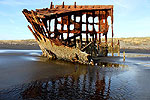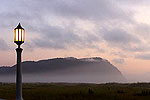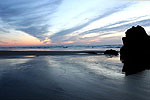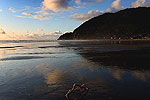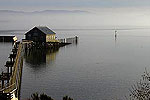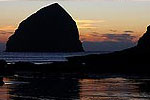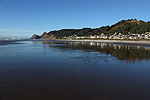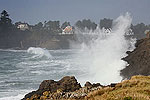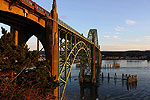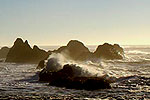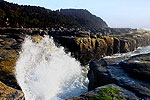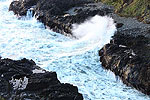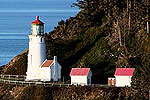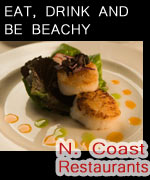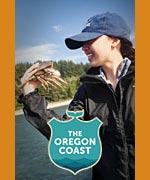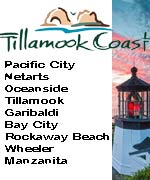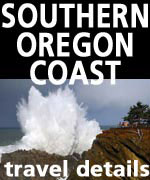Oregon Coast in WWII: Lincoln City's Submarine Lookout
Published 09/76/2015 at 4:22 AM PDT
By Oregon Coast Beach Connection staff
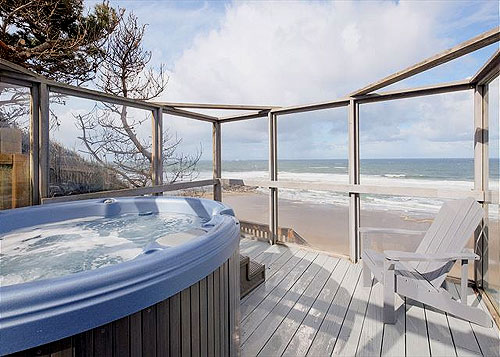
(Lincoln City, Oregon) – The early 1940's were a darker time for the Oregon coast. Considered almost open bait for an invasion, it, like the rest of the west coast, was on high alert for incoming ships, aircraft or submarines from the Japanese or the Germans. This was also a time of rations, hardships, and a tourism industry that had been stopped in its tracks. (Above: what the "Submarine House" looks like right now.)
One historic home in Lincoln City sat perched on the cliffs of the Nelscott district during World War II and kept an eye on the seas. Now called the “Submarine,” it's a vacation rental home provided by A1 Beach Rentals. Its brief but interesting history is intertwined with that of this section of Lincoln City and its beginnings.
Originally, the house was built on property bequeathed to a talk radio host from San Francisco by a woman who died in 1940 or so. Confined to a nursing home, she was a faithful listener of his in the 1930's. When she passed on and gave him a large portion of the lot, it was on the condition that he build his own house there.
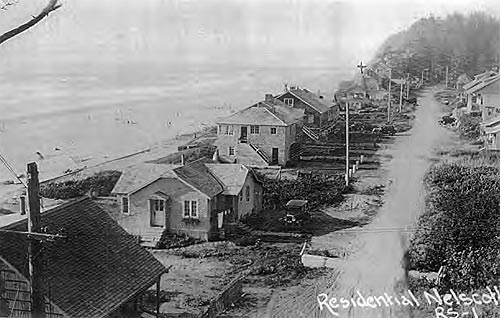
About 1940, the talk show host left California for the Oregon coast and the slowly-burgeoning tourist area that was then called Nelscott. Lincoln City would not acquire its name until 1964, when Nelscott and six other little villages combined to create the town. (Above: the Nelscott area's Marview Ave, later called Anchor Avenue. The Submarine House would be farther up the road beyond the trees. Photo courtesy North Lincoln County Historical Museum).
Up until this point, the little villages along this seven-mile stretch were starting to build a real tourism industry, especially Nelscott (which currently includes hotspots like the Inn at Spanish Head, The Christmas Village shop and the SW 35th access). In the early '20s and '30s, this area became a haven for writers, attracted by a local bookshop. It also featured the precursor to the modern motel: what was called the Nelscott Auto Park. This had evolved from a tent camp, where tents were transitioned to little shacks – and then to cabins – where you could park your car next to where you stayed.
By the late '30s, even the auto park model decayed in popularity, being replaced by the idea of motels. By 1940, the State Parks system had begun to build even more of a tourism for the future Lincoln City area.
Two short years after the man acquired the property, the Japanese bombing of Pearl Harbor killed just about any tourism growth, and these little villages – like the rest of the western coastline – were subject to blackouts at night and of course gas rations. The latter really ended tourism.
New construction completely stalled, and soon troops began filling these little coastal towns. It was in those early years of the war that the talk show host rented his large home out to the military. They set up the observation posts there, with the mission of scanning the seas for any sign of Japanese or German craft, especially submarines. It was thus nicknamed the “Submarine House” by its military tenants. Currently on Anchor Street, at the time it was called Marview Avenue.
According to A1 Beach Rentals, a large gun emplacement was built on the south side of the building, where the fence ends at the abrupt cliff. Apparently, erosion eventually took away that part in later years. The gun reportedly fell over the edge one day.
Why no pictures of this bit of Oregon coast WWII history? Anne Hall, head of the North Lincoln County History museum in Lincoln City, said pictures of anything to do with war operations were not allowed.
“So, we don't have anything but a few pictures of troops and some other buildings until just after the war,” Hall said.
Consequently, she said none of the information provided to Oregon Coast Beach Connection by A1 or the homes' owners can be verified. And there is no way to tell what the actual lookout stations looked like at the time.
One thing is known: as the Great War went on, it became clearer that the West Coast was not going to get invaded. Troops began filtering out of the Nelscott area long before V Day came.
However, once the post-war economic boom began, tourism along the length of the Oregon coast exploded. And so Nelscott itself expanded as well.
Hall said the Koski family (already early homesteaders in the area) bought up the submarine lookout house sometime in the 1950's, and they owned it until about 1978. It was then segmented into separate apartments, and in the early '80s the decking and hot tub were added. It's been a vacation rental home ever since.
The boys in uniform missed out on that relaxing fun by 40 years.
You won't seen any submarines from the home, but it is situated almost directly in front of the famed Nelscott Reef, which sits a couple miles offshore and attracts gobs of surfers almost year-round. It's also a great vantage point to spot whales. The home features a whopping 90 steps down the cliff to the beach, but there are benches along the way.
Called the “Submarine” on A1 Beach Rentals' website, it's often paired with the adjoining Anchor house. More on Lincoln City, the house and the Nelscott area below, and at the Lincoln City, Oregon Virtual Tour.
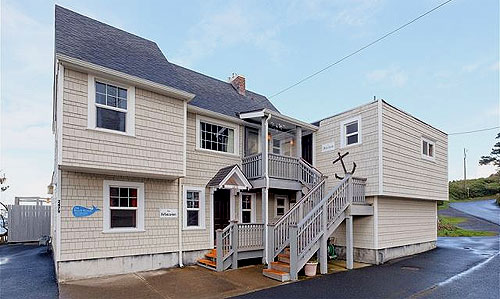
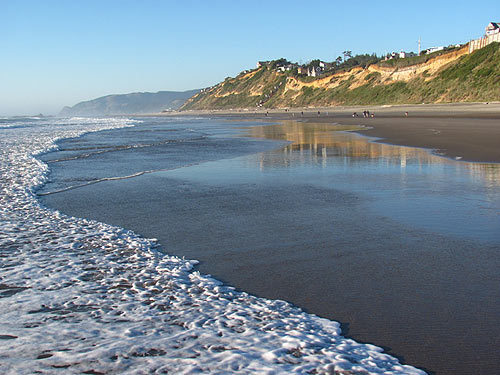
More About Lincoln City Lodging.....
More About Oregon Coast Restaurants, Dining.....
LATEST Related Oregon Coast Articles
From the Puget Sound to Long Beach, alongside Oregon's cleanup. Washington coast events, Seaside events
Astoria's Riverwalk Gets New Lighting, More N. Oregon Coast Roadwork
Delays coming this summer, but the riverwalk has a new look. Seaside, Cannn Beach
April Gets Even Cheaper Midweek at Depoe Bay, Lincoln City: Oregon Coast Deals
Off-season rates plus more at Keystone Vacation Rentals. Depoe Bay lodging specials, Lincoln City hotel reviews, Newport hotel reviews
Washington Coast Begins Week of Clam Digs, April 12 Through 18
Long Beach, Twin Harbors, Mocrocks and Copalis at different times. Washington coast events
Astoria's Crab, Seafood, Wine Fest Floods N. Oregon Coast with Yumminess in A...
April 25 to 27 at the Clatsop County Fairgrounds. Astoria events, Cannon Beach events
Oregon Coast Outdoors: Clamming, Crabbing, Surfing, Fishing, Boarding Deep Guide
The wilds of the coast and hang gliding, boating, mussels, hiking, fishing, crabbing, sandboarding, more. Sciences
Earth Week at N. Oregon Coast's Netarts Bay Gets Down, Dirty and Engaging
April 18 - 19 in Netarts: asking for volunteers. Oceanside events, Tillamook events
Plane Skids Off Runway on S. Oregon Coast, Into Coos Bay Waters
All five were rescued and are okay
Back to Oregon Coast
Contact Advertise on BeachConnection.net
All Content, unless otherwise attributed, copyright BeachConnection.net Unauthorized use or publication is not permitted




